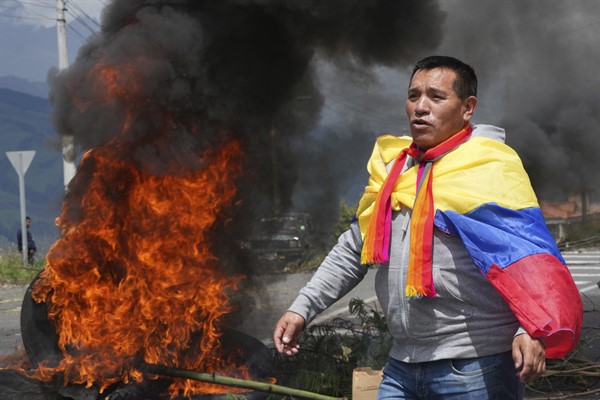On June 30, the government of Ecuadorian President Guillermo Lasso reached an agreement with the country’s leading Indigenous organization, the Confederation of Indigenous Nationalities of Ecuador, or Conaie, and other civil society organizations to bring an end to social protests that had ground the country to a standstill for 18 days. The protests, which began in rural areas and later converged on Quito, the capital, were triggered by rising fuel prices and escalating inflation. But they took place against the backdrop of a surge in violent crime linked with drug trafficking, exacerbated by a deteriorating justice system limiting the government’s efforts to respond effectively.
These twin crises have also been accompanied by political stalemate between the executive and legislative branches. As a result, Lasso, who has been in office just over a year, has been unable to secure votes from both allied and opposition parties to pursue his economic agenda of liberal reforms to stimulate growth and create jobs. According to the agreement with Conaie, Lasso now has 90 days to implement a 10-point agenda, which includes lowering fuel prices, establishing price controls on agricultural products and putting a moratorium on new oil and mining projects, as well as increasing investment in health, education and security. If he is unable to do so, social conflict will define his tenure and may cost Lasso any chances at a second term.
Last month’s protests began on June 13 with peaceful roadblocks in 11 of Ecuador’s 24 provinces. The next day, however, national police detained Conaie’s president, Leonidas Iza, for 24 hours, until a judge ordered his immediate release. Violence subsequently escalated, resulting in six deaths and hundreds injured over the course of the protests. At the height of the demonstrations on June 26, the government made several concessions, including lowering the price of fuel by 10 cents per gallon, as well as offering debt forgiveness and increasing fertilizer subsidies to small- and medium-scale farmers.

